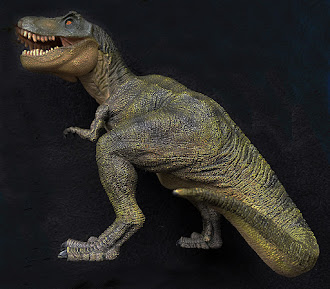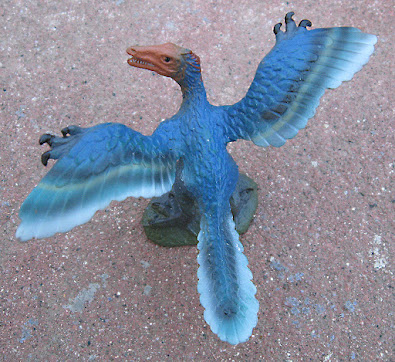During my 35+ years of teaching about life on Earth, the subject of the classification of dinosaurs has progressively undergone a monumental change because of some new-fossil finds and research on them. The old viewpoint was that dinosaurs were extinct cold-blooded reptiles. New information, however, supports a new concept that dinosaurs were warm-blooded and gave rise to birds (e.g., ostriches, chickens, flamingos, hummingbirds, pelicans, hawks, owls, etc.).
The above table categorizes the different groups of reptiles. I created this table for my lab manual many years ago, but important updates are shown in red font.
After many years of new-fossil finds (mainly in China) and using cladistics (which is a new way to group things based on ancestry and shared traits), paleontologists and biologists now know that birds are actually dinosaurs. During Jurassic and Cretaceous times, there were two groups of dinosaurs: non-avian [usually featherless, cold-blooded, commonly large in size] and avian [feathered, warm-blooded, and much smaller in size]. The only lineage of dinosaurs to have survived the end of Cretaceous mass extinction was the avian dinosaur group. In summary: contrary to popular opinion and media hype, not all dinosaurs perished at the end of the Cretaceous Period.
Examples of non-avian dinosaurs are the favorites used in movies and children’s toys: Tyrannosaurus rex, Stegosaurus, Triceratops, Apatosaurus [formerly referred to as Brontosaurus], Brachiosaurus, and Velociraptor (see below). Some of these dinosaurs were prone to having bony armor or spikes and were four-legged.
Example of a non-avian dinosaur: Tyrannosaurus rex.
Another example of a non-avian dinosaur: Brachiosaurus.
Proof of the evolutionary transition from non-avian dinosaurs to avian dinosaurs is a critical part of the concept of just “what is a bird,” and fossils of Archaeopteryx [pronounced “ark-ee-OPT-er-ix] play an important part of how this transition took place.
Archaeopteryx (from my May 8, 2015 post entitled: Archaeopteryx, a Late Jurassic “dino-bird.”). It was 1.7 feet long, from head to tail and about the size of a modern-day raven. In this earlier post, I included two views of the skull of Archaeopteryx. Archaeopteryx was an “early” avian dinosaur (truly “an early bird”!) that lived near the geologic time when reptiles evolved into birds.
Archaeopteryx lived in what is now southern Germany, approximately 150 million years ago in Late Jurassic time. As of today, about 12 specimens have now been found. Most scientists today believe that Archeopteryx is a bird with dinosaur-like traits. It has a blend of both reptile features [rooted teeth, no beak, clawed fingers, a long and bony reptile-like tail, and unfused thoracic vertebrae] and bird features [a beak, flight and tail feathers, feathers on its legs]. It was not a flyer; rather it was probably a flapper of a short-distance glider. In sum, it is not like any bird today. Archeopteryx represents a very early, non-avian feathered avian dinosaur. It represents an evolutionary transitional form not too far distant from its non-avian dinosaur ancestors. The final word, however, on “early bird evolution” has not been written. “Stay tuned,” because new fossils are continually being found at various spots throughout the world (e.g., South America, China, etc.). (livescience.com/24745-archaeopteryx.html)
An avian dinosaur well known to movie enthusiasts is Velociraptor [an example shown below]. This genus comprises chicken-sized dinosaurs, usually portrayed in the movies as vicious predators that joined forces with each other (in feeding frenzies) and attacked much larger prey.
Velociraptor mongoliensis, an example of a species of a non-avian, feathered, dromeosaurid dinosaur of Late Cretaceous [75 to 71 million years old = late Campanian–early Maastrichtian] age) from China]. Drawing adapted/modified from a wikipedia image by Fred Wierum.
It is interesting to compare the morphologic change, over 30 years, in our concept of Velociraptor. Just compare the 2023 version Velociraptor [shown above] versus its 1993 "concept" [shown below].
This last image is of a commercially available toy (plastic model) showing what Velociraptor supposedly looked like, based on information available in 1993 (i.e., before feathers were found on actual skeletal remains).
REFERENCES CITED:
en.wikipedia.org/wiki/Dinosaur
en.wikipedia.org/wiki/Archeopteryx
livescience.com/24745-archaeopteryx.htm
worldatlas.com






I did not realize there was a Velociraptor with feathers. This is fascinating! Thank you.
ReplyDelete